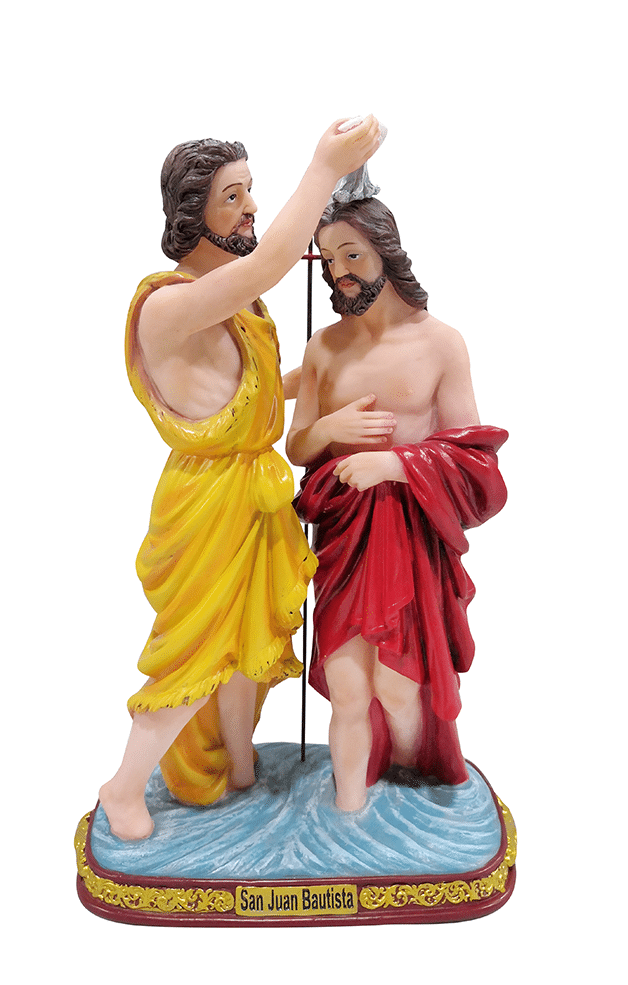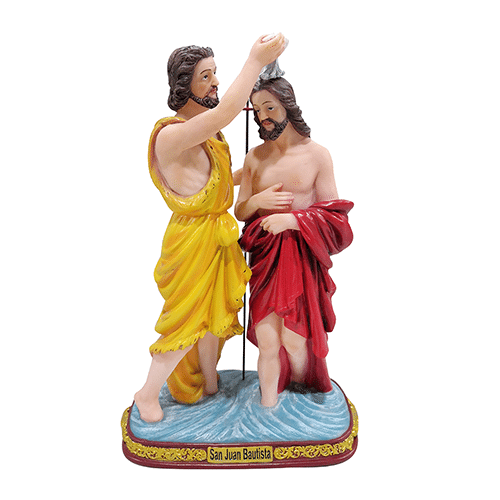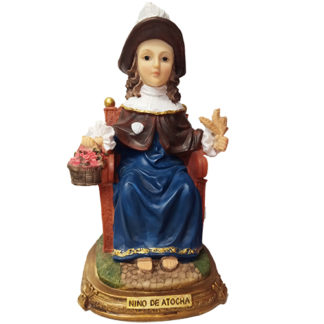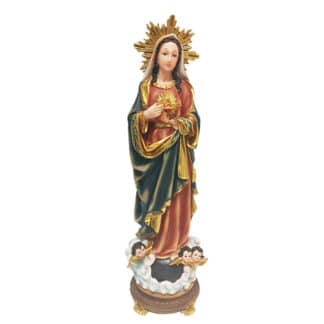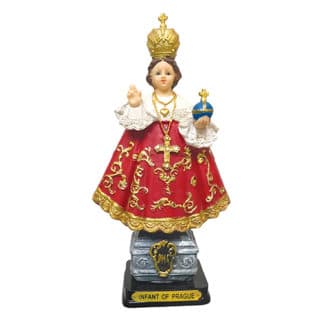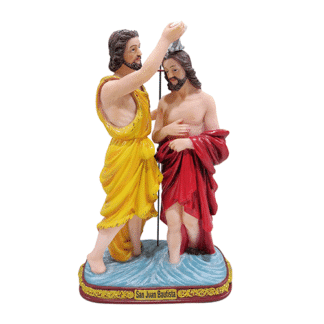Description
The birth of John the Baptist is surrounded by miraculous events. One day his father Zechariah appeared to him the archangel Gabriel to announce that his pleas had been heard: his sterile wife would be pregnant with a man.
Besides the baptism, which John carried out in the Jordan River when Jesus was about thirty years old, they were related because the Virgin Mary and Saint Elizabeth, mother of John, were first cousins. Jesus and Saint John the Baptist were the same age because, according to biblical sources, the pregnant Virgin visited her cousin, who was also pregnant, a scene that is known as the Visitation.
Saint John the Baptist is usually portrayed according to Mark’s description: “John was clothed with camel hair, had a leather belt around his waist, and ate locusts and wild honey” (Mark 1: 6). To these characteristics were added the attributes of the cane, the lamb, the shell and the ribbon with the inscription “Ecce Agnus Dei”, which translates “here is the lamb of God”. In the Renaissance began to represent the image of young John the Baptist, following some apocryphal traditions according to which, when the Holy Family returned from their flight to Egypt, they met with John, who from childhood lived as a hermit in the desert. Traditionally it is considered that this was the first time that the cousins were found.
In this fine-looking painting, signed by Alfonso de Heredia and dated in 1672, Saint John the Baptist appears as a young man with blond hair, dressed in a camel-skin dress and a red tunic. In his right hand he holds a shell on which water falls, as a symbol of baptism, and on his left arm he carries a staff with the inscription “Ecce Agnus Dei”, an expression with which he recognized Jesus when he was baptized. Precisely because of these words, on the lower right side of the work there is a lamb beside a river reminiscent of the Jordan. This is one of the few colonial paintings signed and dated by its author, who also painted several works for temples santafereños and tunjanos.
